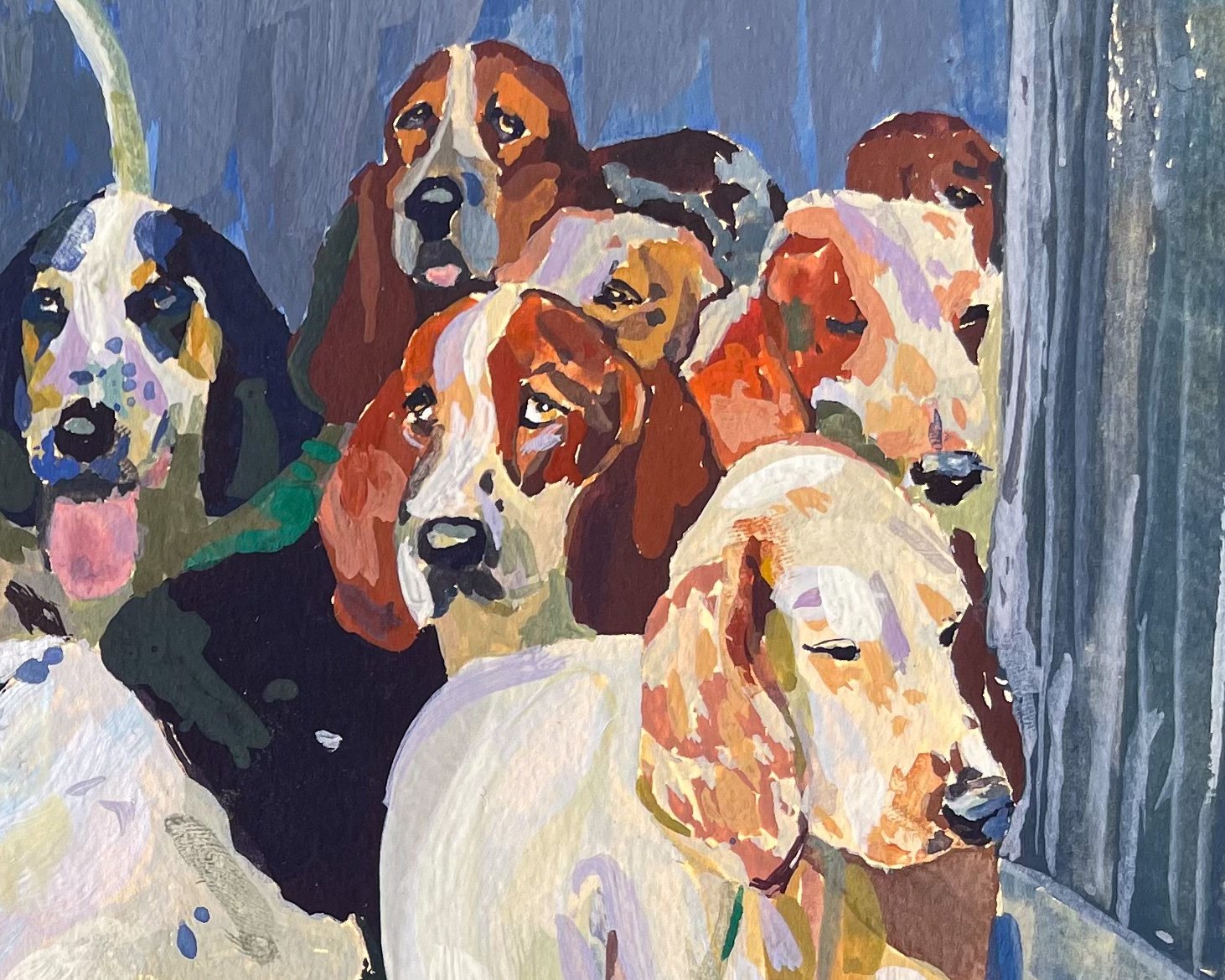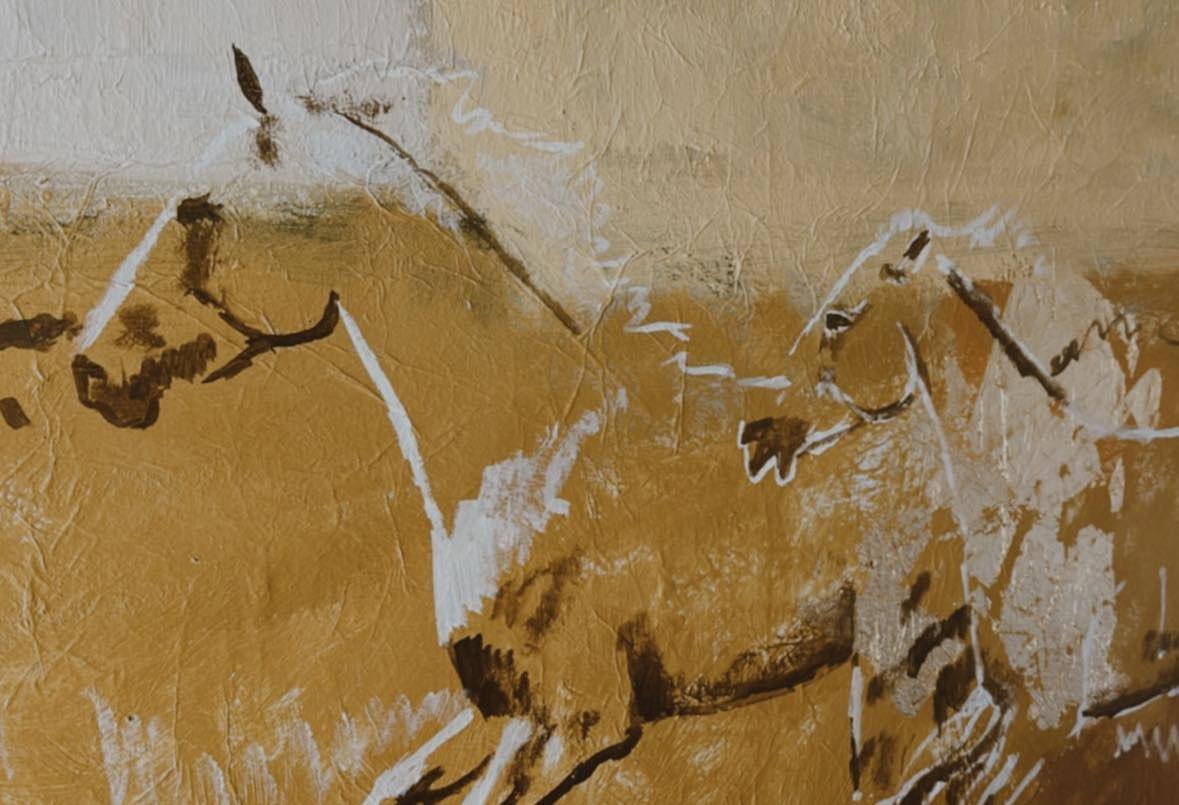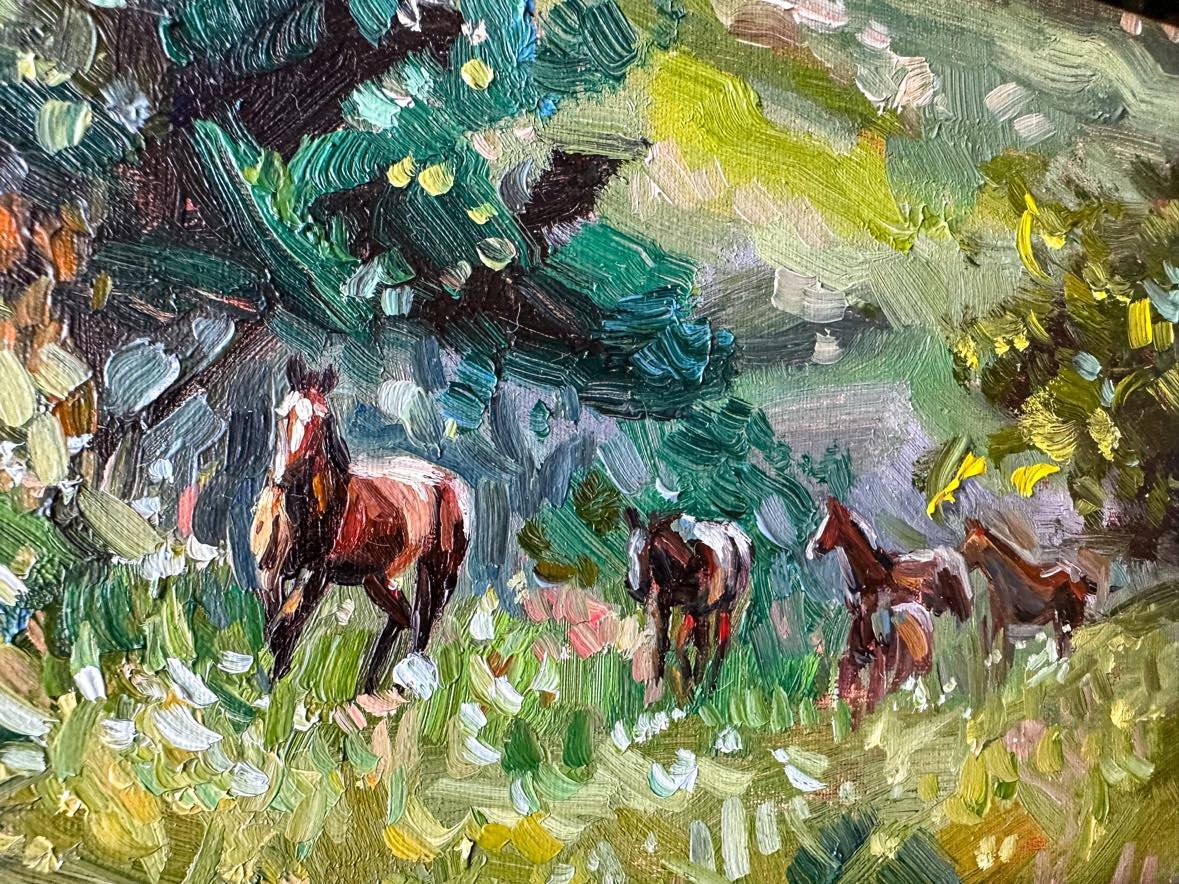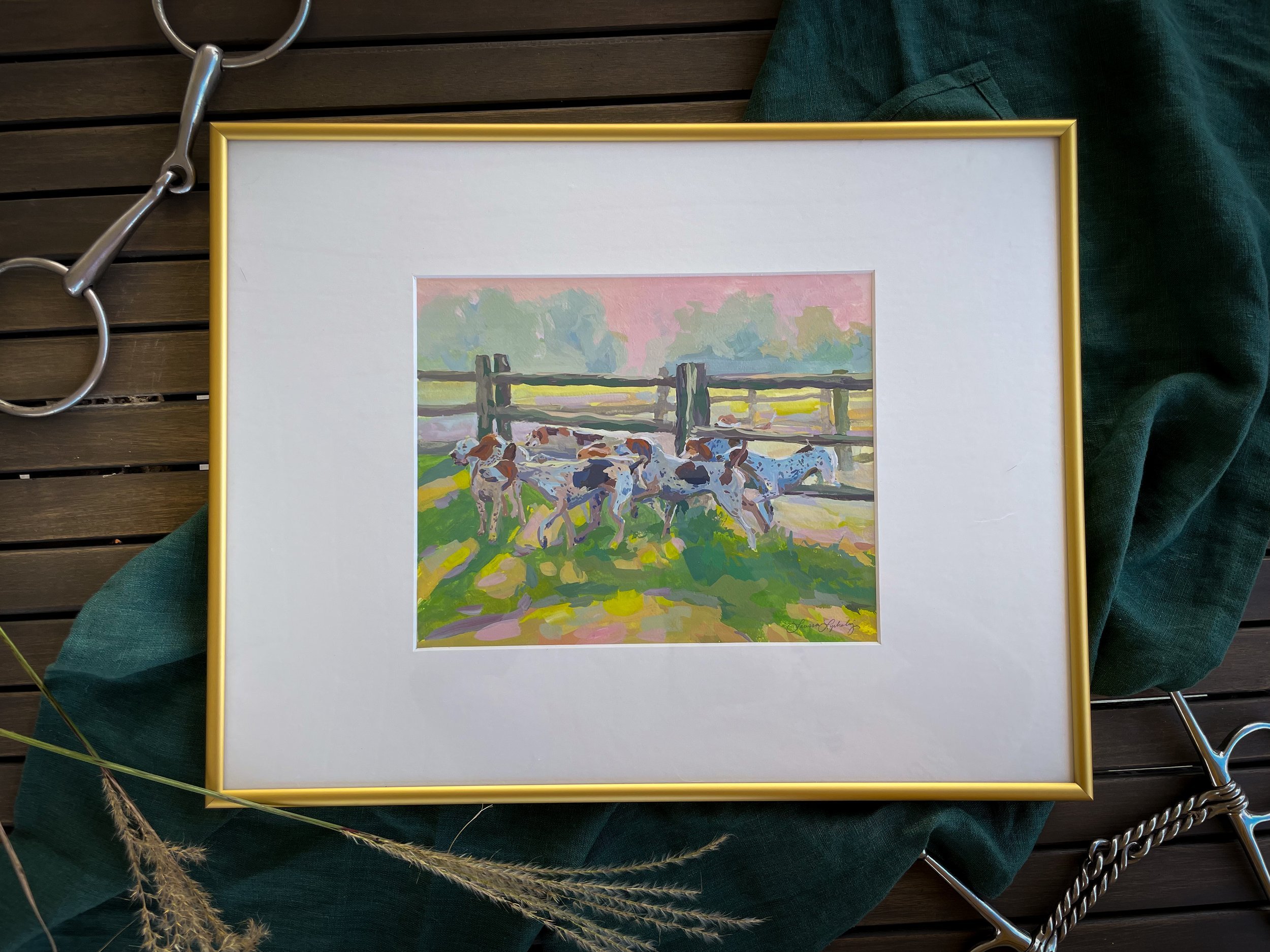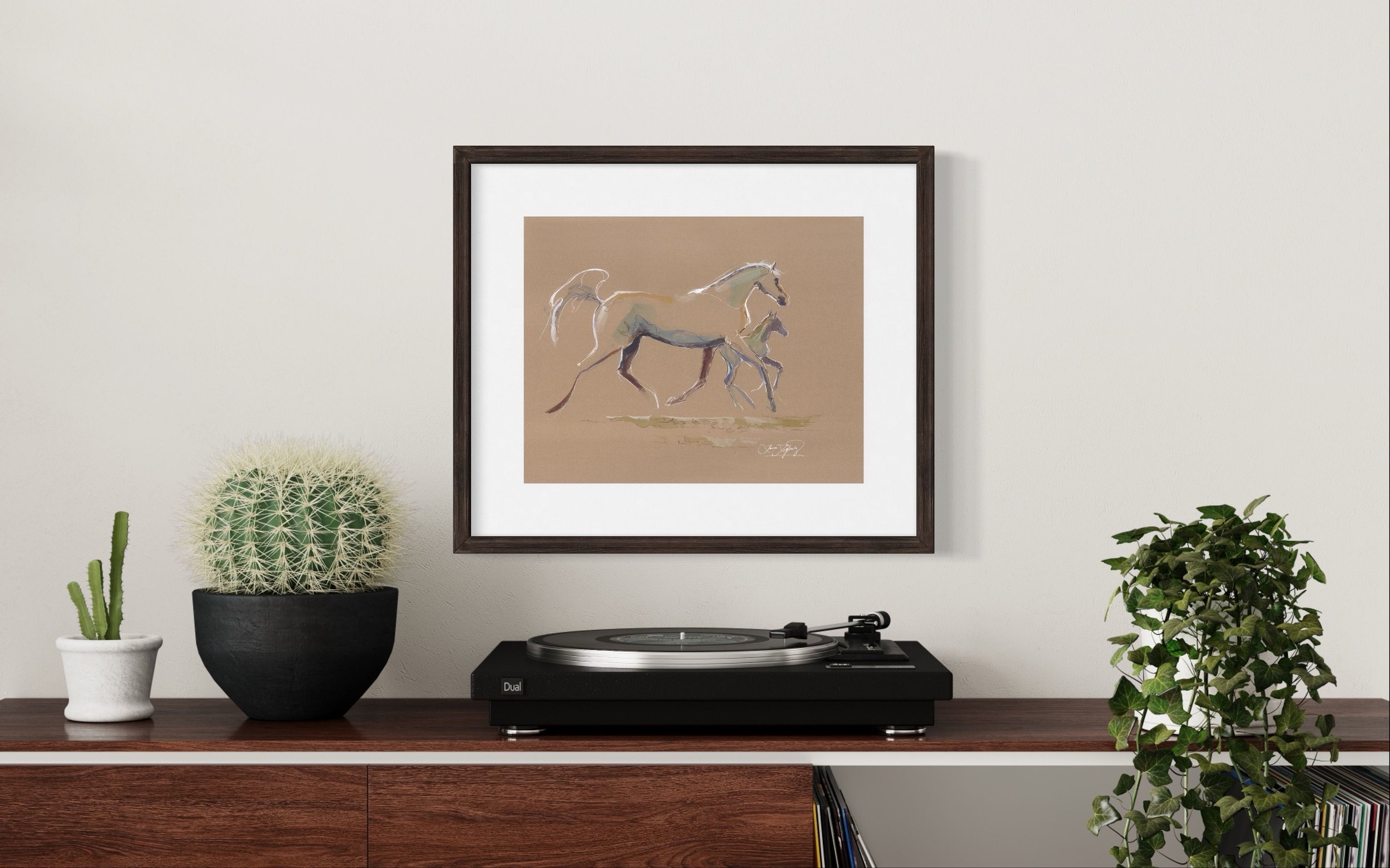Originals vs Prints: How to Tell the Difference
A Collector’s Guide
In the vast world of art, the line between original masterpieces and fine art prints can sometimes seem as delicate as a painter's brush stroke. To the untrained eye, they might appear indistinguishable, but look closely and you'll uncover the subtle nuances that set them apart. In this guide we'll explore the secrets that separate fine art prints from original paintings, dive into the intricacies of open edition and limited edition prints, and unveil what makes original art and limited edition prints so collectible.
Fine Art Prints: A Captivating Replica
Fine art prints are reproductions of an original artwork, and in an ideal situation they are meticulously crafted to capture the essence of the original piece. While prints might not be the one and only, they offer an opportunity for art lovers to enjoy a piece of artistry without owning the original. For the untrained eye it might be hard to tell the difference between a quality print and an original artwork, but if you pay attention there are some giveaways. Most notably, it's essential not to be fooled by the clear texture paste often used to replicate the texture of the original painting. Texture alone isn't a guarantee of an original work - keep reading for clues to determine an artwork’s authenticity.
How to spot a fine art print:
Texture and Clarity: Fine art prints often utilize clear texture paste to replicate the texture and depth of the original painting. While this technique can mimic brushwork, it's important to remember that texture alone does not denote an original piece. Always look for additional clues:
If the texture looks like it’s been smeared over the top of an image, it is almost certainly a print (and probably not the best quality).
The texture of an original brushstroke will follow the shape of the colors on the art’s surface - look at the piece from the side so you can get a better view of the finish. Even a varnished original will have subtle changes in surface where layers of paint are thicker or thinner, and these will almost always correspond with where you see changes in color.
If you see random globs of texture or the thick areas don’t align with the image, you are almost certainly looking at a print.
Signature and Numbering: Artists frequently sign their prints, usually in pencil, to denote authenticity. Keep an eye out for this delicate signature, which distinguishes the print as an authorized reproduction. Limited edition prints are almost always signed, and will be numbered so collectors can tell their print apart from others. Limited edition prints came about when printing presses were used to create the images. The first prints had the best quality due to the template being crisp, but edges would soften and change as the template was repeatedly used. This is why low number editions are still considered more valuable.
Hand Embellishing: Some artists go the extra mile to add their personal touch to each print. Hand embellishing involves the artist enhancing specific areas with paint, gold leaf, or other art mediums, creating a unique and collectible version of the print. These special edition prints are the next best thing to an original painting, as they incorporate handmade original details from the artist.
Printing Quality: The Mark of Excellence
When distinguishing between fine art prints and original paintings, the quality of the print becomes a critical factor:
Colors: High-quality fine art prints replicate the vibrant colors and intricate details of the original painting. The colors should be rich, accurate, and true to the artist's vision. The inks must be lightfast to prevent fading over time, ensuring the print will not degrade in the light.
Crispness of Edges and Lines: Fine art prints should exhibit sharp, well-defined edges and lines, with no blurring or loss of detail. The lines, contours, and colors should mirror the artist's original intent. You should not see any pixels or dots unless they are part of the original artwork.
Archival Materials: Fine art prints are typically produced using archival materials to ensure longevity. This means they are less likely to fade, yellow, or deteriorate over time, preserving their beauty for generations. Look for 100% cotton papers, cotton or linen canvases, or quality wood and metal prints.
Open Edition vs. Limited Edition Prints: A Story of Rarity
Fine art prints are further categorized into open edition and limited edition prints, and the difference lies in their availability:
Open Edition Prints: These prints have no predetermined limit to the number of copies produced. They offer affordability and accessibility, making them a wonderful way for art enthusiasts to bring art into their lives.
Limited Edition Prints: In contrast, limited edition prints are restricted to a fixed number of copies, adding an element of exclusivity and rarity. Each print is numbered (e.g., 25/100), with the first number indicating the print's individual number and the second number representing the total quantity. Limited edition prints are often signed by the artist and are highly sought after by collectors.
Original Art and Limited Edition Prints: The Collectibility Factor
Original art and limited edition prints hold a special place in the hearts of art collectors for several reasons:
Uniqueness: Original paintings are one-of-a-kind creations, ensuring that no other piece in the world is identical. Embellished prints are similarly unique. Limited edition prints, while not unique, are still restricted in number, making them more exclusive than open edition prints.
Investment Value: Original art, embellished prints, and limited edition prints have the potential to appreciate in value over time. This makes them not just beautiful additions to your space but also sound investments.
Artistic Connection: Collectors often value the connection they feel with the artist when owning an original, embellished print, or limited edition piece. The knowledge that the artist's hand or approval was involved enhances the emotional connection to the artwork.
Commitment to Excellence: Larissa Ann's Dedication to Quality
Larissa Ann is dedicated to upholding the highest standards in fine art printing. We partner exclusively with the best fine art and photo printers available, prioritizing American companies whenever possible. This commitment ensures that our prints meet the most stringent quality criteria.
Our prints exemplify excellence of colors, with each hue and shade faithfully reproduced to capture the essence of the original artwork. The crispness of edges is a hallmark of our dedication to precision, ensuring that the art retains its intricate details and clarity.
We prioritize archival materials that not only protect the integrity of the art but also guarantee its longevity. We believe that art is a legacy, and our prints are crafted to withstand the test of time.
The world of fine art is complex, but with an educated eye you’ll be able to spot the difference between the original artwork and different types of print. By understanding the nuances between fine art prints and original paintings, and the distinctions between open edition and limited edition prints, you can embark on your journey as an art enthusiast or collector with a deeper appreciation for the treasures you encounter. Whether it's the texture, the signature, or the printing quality, each aspect adds layers of intrigue to the art you cherish, making it not just a work of art but a piece of your legacy.
Please feel free to reach out with any questions, and let's embark on this creative journey together.

